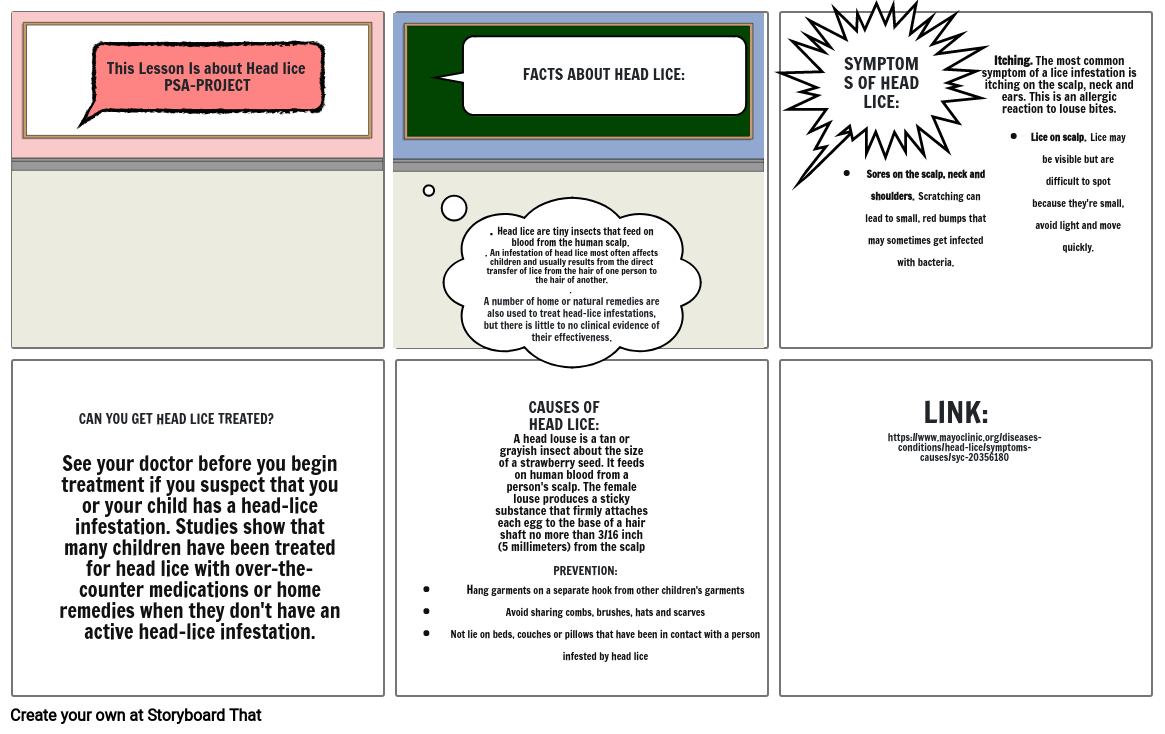PSA-PROJECT

Süžeeskeem Tekst
- This Lesson Is about Head lice PSA-PROJECT
- . Head lice are tiny insects that feed on blood from the human scalp. . An infestation of head lice most often affects children and usually results from the direct transfer of lice from the hair of one person to the hair of another.. A number of home or natural remedies are also used to treat head-lice infestations, but there is little to no clinical evidence of their effectiveness.
- FACTS ABOUT HEAD LICE:
- SYMPTOMS OF HEAD LICE:
- Sores on the scalp, neck and shoulders. Scratching can lead to small, red bumps that may sometimes get infected with bacteria.
- Itching. The most common symptom of a lice infestation is itching on the scalp, neck and ears. This is an allergic reaction to louse bites.
- Lice on scalp. Lice may be visible but are difficult to spot because they're small, avoid light and move quickly.
- CAN YOU GET HEAD LICE TREATED?
- See your doctor before you begin treatment if you suspect that you or your child has a head-lice infestation. Studies show that many children have been treated for head lice with over-the-counter medications or home remedies when they don't have an active head-lice infestation.
- PREVENTION:Hang garments on a separate hook from other children's garmentsAvoid sharing combs, brushes, hats and scarvesNot lie on beds, couches or pillows that have been in contact with a person infested by head lice
- A head louse is a tan or grayish insect about the size of a strawberry seed. It feeds on human blood from a person's scalp. The female louse produces a sticky substance that firmly attaches each egg to the base of a hair shaft no more than 3/16 inch (5 millimeters) from the scalp
- CAUSES OF HEAD LICE:
- https://www.mayoclinic.org/diseases-conditions/head-lice/symptoms-causes/syc-20356180
- LINK:
Loodud üle 30 miljoni süžeeskeemi

